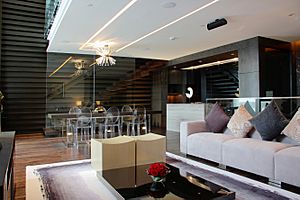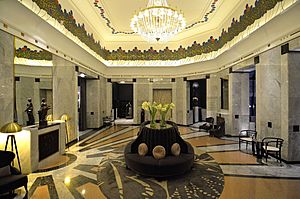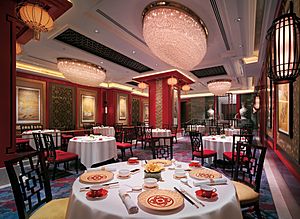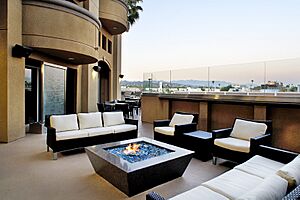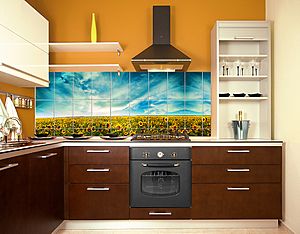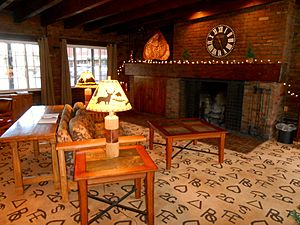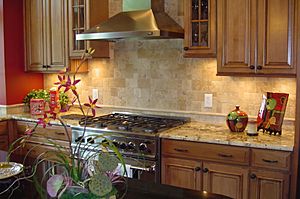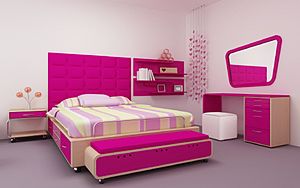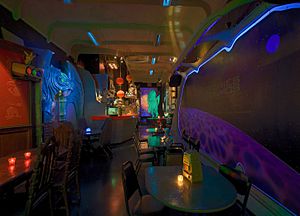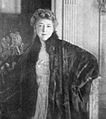Interior design facts for kids
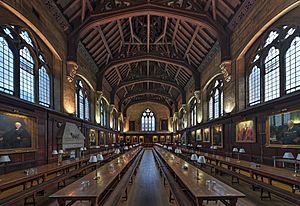
Interior design is about making the inside of a building or space look amazing and feel comfortable. It's both an art and a science. The goal is to create a healthy and beautiful environment for people who use the space.
An interior designer is a person who plans, researches, and manages these projects. This job involves many different steps. It includes coming up with ideas, planning how the space will be used, checking out the site, and making sure the design is built correctly.
Contents
What an Interior Designer Does
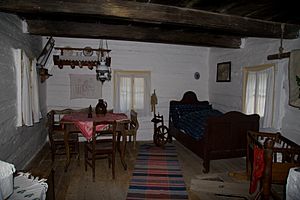
An interior designer creates solutions for any indoor space. They work on how spaces are laid out in a building. They also handle technical things like lighting, sounds, and temperature (like air conditioning).
Important skills for an interior designer include:
- Understanding how colors affect a space and people's moods.
- Knowing about different fabrics.
- Understanding building and electrical rules.
- Keeping up with different styles and trends.
Here are the steps an interior designer often takes:
- First Step: Planning and Ideas
- The designer studies if the project is possible and plans the space.
- They check the budget and develop design ideas.
- They choose finishes, furniture, art, and accessories.
- They manage the project and help with moving things in.
- Second Step: Drawing the Plans
- The designer makes drawings and sketches of the proposed floor plans.
- These drawings show details, elevations, and how the space will look.
- The interior designer discusses all plans with the customer.
- Common drawings include floor plans, electrical plans, and furniture plans.
Types of Interior Design

There are many different types of interior design. Each type focuses on a specific kind of space. Some common types include residential, commercial, and hospitality design. Other types are healthcare, universal, and exhibition design.
Residential Design
Residential designers focus on homes. They help people make their homes more comfortable. They consider the homeowner's needs, personality, and style. The designer also thinks about things like security and convenience for the home.
Commercial Design
Commercial interior designers work on public spaces. These include office buildings, museums, hotels, and stores. They create environments that are both useful and beautiful. A commercial designer chooses paint colors, artwork, and furniture. They also consider acoustics (sound) and lighting. Recently, some designers have added indoor plants to offices. This helps connect office workers with nature.
Hospitality Design
Hospitality designers create spaces for guests and hosts. This includes places like hotels and resorts. They also design spaces for conventions and special events. The goal is to make places welcoming for travelers and tourists.
Healthcare Design
Healthcare design focuses on places like hospitals. The goal is to create comfortable spaces for patients and staff. Designers use research to make sure healthcare facilities improve patient care. They want to make sure these spaces meet the needs of everyone.
Universal Design
Universal design is about creating spaces and products for everyone. This means designing things that can be used by all people. It aims to make environments as accessible as possible.
Exhibition Design
Exhibition designers create different types of exhibits. These can be in museums, retail stores, or zoos. All exhibits try to share a message with their audience. They use many technologies to make experiences engaging. This helps diverse audiences learn from the exhibit's stories and objects.
Famous Interior Designers
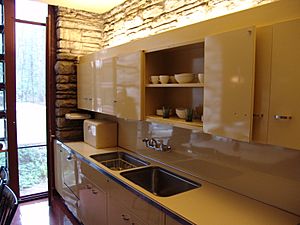
Here are some well-known interior designers throughout history:
- Early Interior Designers
- Jean-Henri Jansen (1854–1928)
- Elsie de Wolfe (1865–1950)
- Ogden Codman (1863–1951)
- Frances Elkins (1888–1953)
- Frank Lloyd Wright (1867–1959)
- Fritz August Breuhaus (1883–1960)
- Stephan Bouldin (1880–1967)
- Emilio Terry (1890–1969)
- Dorothy Draper (1889–1969)
- Modern Interior Designers
- Jean Royere
- Jed Johnson
- Verner Panton
- Terence Conran
- Kelly Hoppen
- Mauro Lipparini
- Ron Arad
- Celebrity Interior Designers
- Rachel Ashwell
- Laurence Llewelyn-Bowen
- Linda Barker
- Nina Campbell
- Tara Bernard
Images for kids
-
The art déco interior of the grand concourse at the 30th Street Station in Philadelphia
-
Elsie de Wolfe, taken from The House in Good Taste, 1913.
-
Terracotta Art Deco sunburst design above front doors of the Eastern Columbia Building in Los Angeles; built 1930.
-
Bar in Rotterdam
See also
 In Spanish: Diseño interior para niños
In Spanish: Diseño interior para niños


